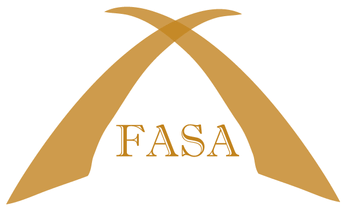Pinellas teens protest plan to end school block schedules
As Pinellas County high schoolers prepared this week to pick classes for the fall, word spread on four campuses that students would not have as many choices as in the past.
Teachers at Boca Ciega, Gibbs, Hollins and Lakewood alerted the teens that their schools would be abandoning the schedule in which they take four 86-minute courses per day on an alternating A/B calendar. The model, which has been in place for 15 years, allows them to earn eight credits per year.
Instead, students would take seven 47-minute courses daily, earning seven credits per year like most other high schools in the county.
The news did not go over well.
“I can already see how bad it will be,” said Annabella Triola, a sophomore in the Gibbs High School arts magnet, who started an online petition to protest the change.
With one less class, Annabella said, she won’t be able to take the full slate of arts courses she joined the magnet for while also completing her academic core classes. Equally important, she added, the loss of longer classes taken every other day will increase student stress levels as they have less time to absorb their lessons.
“If they are already struggling in their classes as it is, they will struggle twice as much in half the time,” she said, echoing many comments from the online petition, which has drawn hundreds of signatures.
Superintendent Kevin Hendrick said he was not surprised to hear of opposition to the move, noting that change often faces resistance.
Still, he argued that both academic and financial concerns make the shift a necessity.
The block schedule went into effect in 2010 to combat persistently poor student performance at the four schools. At the time, the schools had six-period days, meaning with a 24-credit graduation requirement, students had little room for error. One failed course would put them off track for graduation.
The district did not have the type of credit recovery programs it now provides.
“We went to an eight-period day to capture credits for these kids,” Hendrick said.
While the block model has its pros, such as providing more class time to present material and complete projects, it also means that students do not see the content daily, he added. As a result, they have less time to practice and process the lessons — something he viewed as critical in complicated subjects like math.
Plus, missed days have a greater negative effect, he added, noting that absenteeism has been problematic.
“When you miss a block class, you’re missing it not once but twice that week,” Hendrick said. “That’s a big challenge.”
Taking courses five times a week offers more opportunity to reset, he said.
Beyond academics, the district also said the block schedule is more expensive.
Teachers in block schedules teach six of eight periods, while those at the other high schools teach six of seven. That means it takes more teachers to cover classes in the block schedule.
District enrollment has been decreasing, generating less money to pay for teachers. The four schools in question have 2,000 fewer students than 15 years ago, with Gibbs, Boca Ciega and Lakewood sitting almost half-empty.
When the block schedule began, Hendrick said, it cost the district about $500,000 extra for the four schools. Today the expense is about $3.6 million.
“I don’t even want to entertain the notion of closing or consolidating high schools,” Hendrick said. “At the same time, I have to run a budget that is fiscally responsible.”
The schedule change should achieve the two goals of improving student outcomes and cutting costs, he said, adding that students will still have the same access to courses — including electives — as before.
Many parents and students aren’t convinced. In discussions and social media groups, they’ve said they haven’t gotten much information from the district, but what they’ve heard has disturbed them.
“The arts magnet is one of the reasons we’re at Gibbs. It’s something my daughter really cares about,” said Brian Minichillo, who signed the online petition. “I’m worried they’re going to lose the chance to get all the electives they’re at the school for. It seems like the arts would suffer more than anything else.”
Less than a year after voters renewed a local property tax to bolster arts programs and employee salaries, that thought stings supporters.
Minichillo expressed frustration that parents weren’t included in the discussion about changing the schedule.
Lee Bryant, president of the Pinellas Classroom Teachers Association, said he had heard from some unhappy teachers, particularly ones who have longer lessons such as labs. They like the current schedule, he said, “because they have time to get done everything that needs to get done.”
If working conditions are being impacted, Bryant said, the issue could come up during contract negotiations.
It’s not likely to come up at school board meetings, though, unless students and parents do the talking.
The decision about how to schedule the school day and how many teachers to place at each school is purely administrative. The school board does not vote on such matters.
Jeffrey S. Solochek is an education reporter covering K-12 education policy and schools. Reach him at jsolochek@tampabay.com.
